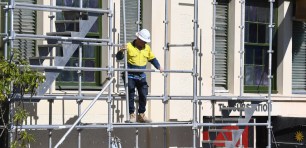
Source: Charley's / Facebook
Australian specialty chocolate makers are considering how to pass rising costs on to consumers, as some small businesses say the cost of cocoa has doubled from pre-pandemic levels.
Global market prices for cocoa are approaching decade-high levels, after poor weather and disease hampered crops in West Africa, where the bulk of the world’s cocoa supply is grown.
Spot prices for commodity cocoa, used by major multinational chocolate brands, are now driving up the cost of cocoa produced in nations like Papua New Guinea, Samoa, and the Solomon Islands — regions favoured by some of Australia’s boutique producers.
Li Peng Monroe, founder of Canberra’s Jasper + Myrtle, said the business will have little choice but to pass costs on to her customers.
Get daily business news.
The latest stories, funding information, and expert advice. Free to sign up.
“As a small importer of cocoa beans, because we make everything from bean to bar, my cocoa prices have doubled before they even land in Australia,” Monroe told SmartCompany on Tuesday.
Australians with a sweet tooth are used to paying more for a premium product, and Jasper + Myrtle’s award-winning bars start at $10.50.
Monroe said the business will have to raise prices even higher to cope.
There will “definitely be a price increase at this rate,” she said.
“I haven’t calculated how much that is going to be because I’m worried about my customers — I don’t want them to stop eating chocolate.”
Why are chocolate prices rising?
Cocoa is not the only vital commodity that is surging in value.
While Australia is a major sugar-growing nation, failed harvests in South America have pushed up global sugar prices this year, including those levelled by local growers.
Australian cane growers are “getting the highest price for their cane in 20 or 30 years,” said Chris Jahnke, CEO of Charley’s, located in Queensland’s Mission Beach.
At the same time as raw materials increase in market value, local producers say the high cost of shipping has only been compounded by costly delays to the quarantine process.
Charley’s, which grows a small portion of its cocoa domestically, recently had a shipment of imported cocoa stuck in the Port of Brisbane for two and a half months, Jahnke said.
The business would have expected customs delays of two to three weeks pre-pandemic, “which is still a long time”, he added.
“At the end of the day, all that costs money,” Jahnke continued.
“There’s all the charges they levy, and in addition to that, we’re having to really factor a potential lengthy delay like that into our production scheduling.
“It all costs money, and there’s no free ride anywhere.”
Local producers hoping to visually differentiate their chocolate from mass-produced alternatives also invest in premium packaging, and Jahnke said a recent quote for packaging came in 50% higher than previous agreements.
Beyond inputs specific to the boutique chocolate sector, some producers say the cost of online marketing has surged to the point where it is no longer financially feasible for producers to invest in customer outreach.
Small producers say those price hikes, combined with the opaque changes to social media algorithms, are making it harder for businesses to stay front of mind for cost-sensitive consumers.
The surging cost of postage is another constraining factor, with Monroe describing freight costs as “beyond recognition”.
How are small businesses coping with rising costs?
While entrepreneurs consider their margins, broader economic pressures are likely to constrain discretionary spending among even the most dedicated chocoholics.
Monroe said Jasper + Myrtle “might have to absorb some of the cost increases myself, but certainly we’ll have to look at how we can meet all of our other costs,” including staff wages.
“We have tried to pass on some costs, but it is always a difficult, difficult thing,” Jahnke added.
Mörk Chocolate, which operates three high-end hot chocolate cafes in Melbourne, is also considering the margins on its $7-a-cup product.
“Up until now, we have taken on a significant portion of the increased costs ourselves,” said co-founder Kiril Shaginov.
“We have been cautious about raising prices at the retail level, as we want to avoid surprising and disappointing our customers.”
Mörk Chocolate prices are slightly higher than traditional cafe offerings, Shaginov continued, reflecting on not just raw materials, but on fluctuating exchange rates, labour costs, and superannuation.
“Nevertheless, as a specialty chocolate company and a leader in the field, we strive to set a precedent.”
The cyclical and seasonal factors driving up cocoa prices may last another 12 months, as global producers play catch-up to demand, suggesting elevated costs well into 2024.
Now, the advice handed to consumers is familiar to anyone who supports specialty producers: if you have to buy less, buy local, and buy better.
“If they want to cut down, eat the better ones: made from bean to bar, in good conditions,” Monroe said.
Handpicked for you

Construction industry collapses surge as sector battles inflation, cash flow limitations and the COVID hangover




COMMENTS